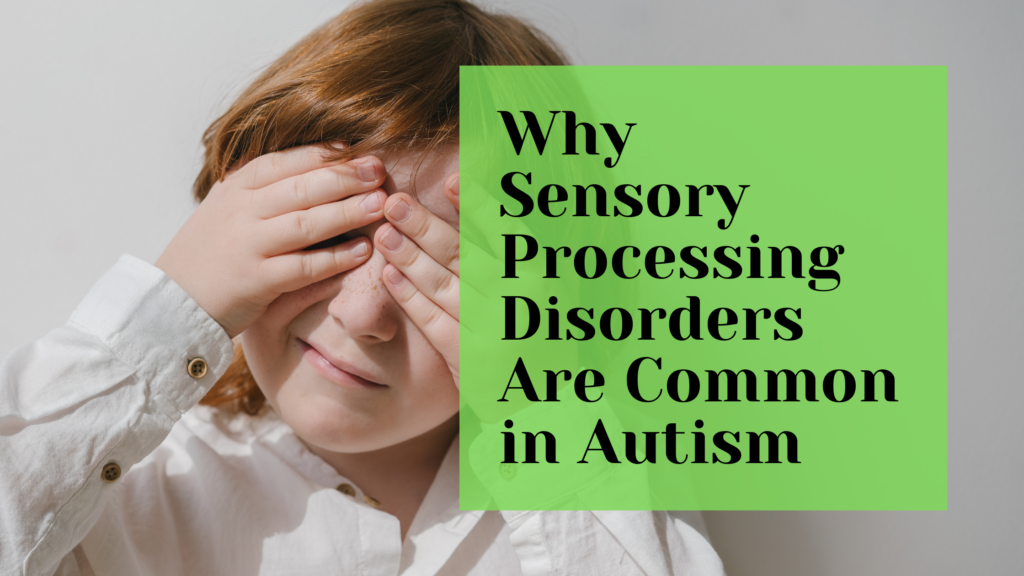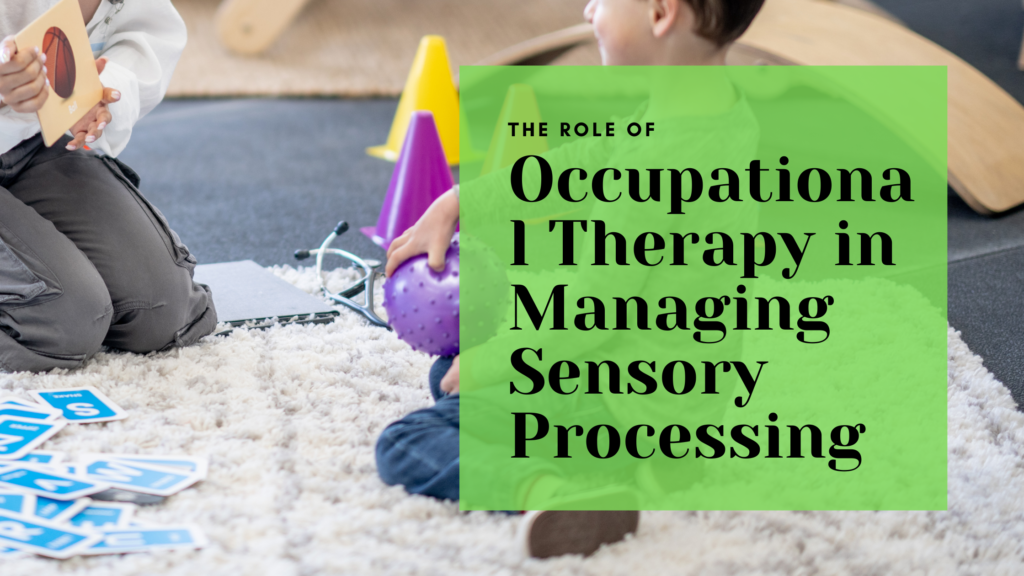I. Introduction
Autism spectrum disorder (ASD) is a developmental condition that affects how individuals perceive and interact with the world. Many children with autism also experience sensory processing disorder (SPD), a condition that makes it difficult for the brain to interpret and respond to sensory information. While not all children with autism have sensory processing issues, the two conditions often co-exist, with sensory challenges being a common feature in autism.
This article aims to provide parents with essential information on recognizing and managing sensory processing difficulties in children with autism. We will cover what SPD is, how it impacts children with autism, how to identify sensory triggers, and strategies to support children at home and in other environments.
II. What is Sensory Processing Disorder (SPD)?
Sensory processing disorder (SPD) occurs when the brain has difficulty organizing and responding to sensory information from the environment. This information can come from the senses, such as touch, sound, sight, taste, smell, movement, and body awareness. Children with SPD may either overreact or underreact to sensory input, making everyday activities challenging.
SPD is commonly found in children with autism. Research shows that sensory challenges affect a large majority of children with autism, causing difficulties in daily functioning, learning, and social interactions. The connection between SPD and autism is significant because sensory issues can intensify behaviors and emotions, leading to meltdowns or withdrawal.
Sensory modulation is a key part of SPD. Some children with autism may engage in sensory-seeking behaviors, where they crave intense sensory input, like jumping or spinning. Others may display sensory-avoiding behaviors, trying to escape or avoid stimuli that feel overwhelming, like loud noises or bright lights. Understanding these behaviors is essential in helping children manage their sensory world.
III. How Sensory Processing Disorder Affects Children with Autism
Children with autism who also have sensory processing disorder often struggle with daily activities, social interactions, and learning. Simple activities, like brushing teeth, putting on clothes, or attending school, can become overwhelming when sensory processing challenges are present.
Sensory triggers, such as loud noises, bright lights, or certain textures, can lead to meltdowns or disruptive behavior. For example, a child might cover their ears and cry in response to the sound of a vacuum cleaner or refuse to wear certain fabrics because they feel uncomfortable. These reactions aren’t misbehavior; they are signs of sensory overload.
When children experience sensory overload, they may feel anxious, frustrated, or withdrawn. They may have meltdowns, a state where they lose control due to overwhelming sensory input. In social settings, sensory issues can make it hard for children to engage with others, leading to feelings of isolation or fear.
IV. Identifying Sensory Triggers in Children with Autism
Recognizing a child’s sensory triggers is crucial in helping them manage their sensory challenges. Parents can start by observing their child’s reactions to sensory input. For instance, does the child cover their ears when there’s a loud noise? Do they avoid certain textures or become upset in bright environments?
Sensory assessments conducted by occupational therapists are helpful in identifying specific sensory triggers. These professionals can use specialized tools and activities to assess how the child processes sensory information. Parents can also keep sensory logs, noting when the child becomes upset, what sensory input was present, and how the child responded. This can help identify patterns and triggers over time.
It’s important to understand that sensory responses vary. Some children may be hypersensitive (over-responsive), reacting strongly to sensory input like loud noises or bright lights. Others may be hyposensitive (under-responsive) and seek more intense sensory experiences, such as rough textures or loud sounds. Identifying where the child falls on this sensory spectrum is key to developing effective support strategies.
V. Types of Sensory Processing Challenges
Auditory Processing Issues
Children with auditory processing issues may struggle with loud or unpredictable sounds. Noises like sirens, vacuum cleaners, or even crowded environments can be overwhelming and lead to sensory overload. These children might cover their ears, cry, or try to escape noisy situations.
Visual Processing Issues
Bright lights, fast-moving objects, or cluttered environments can cause distress in children with visual processing challenges. Flickering lights or busy visuals, such as in classrooms or shopping malls, may lead to discomfort or meltdowns. Reducing visual clutter and using soft lighting can help manage these issues.
Tactile Sensitivities
Many children with autism have tactile sensitivities, meaning they are either overly sensitive to touch or seek more tactile input. For example, they might refuse to wear certain fabrics, avoid messy play, or dislike being touched unexpectedly. Tactile sensitivities can make dressing, bathing, and other daily tasks challenging.
Proprioceptive and Vestibular Processing
The proprioceptive system helps with body awareness, and the vestibular system controls balance and movement. Children with difficulties in these areas may struggle with activities that require balance, like climbing stairs, or may not know where their body is in space, leading to clumsiness. They might also seek movement by rocking, spinning, or jumping.
VI. Strategies to Support Children with Autism and Sensory Processing Disorder
Creating a Sensory-Friendly Environment
Creating a sensory-friendly environment is one of the most effective ways to support children with SPD and autism. Parents can modify the home to reduce sensory overload by using tools like noise-cancelling headphones to block out loud sounds, soft lighting to reduce bright glare, and calming textures in bedding or clothing to provide comfort.
Using Sensory Tools and Activities
Sensory tools, such as weighted blankets, sensory bins filled with rice or sand, fidget toys, and tactile objects, can help children self-regulate. These items provide calming sensory input or satisfy the child’s sensory needs. For example, a weighted blanket can provide deep pressure, helping the child feel more grounded.
Structured Sensory Diets
A sensory diet is a planned schedule of sensory activities designed to help children stay regulated throughout the day. Occupational therapists can help parents create sensory diets tailored to their child’s needs. These diets might include activities like jumping on a trampoline, squeezing stress balls, or taking sensory breaks during the day.
Calming Techniques for Sensory Overload
When a child experiences sensory overload, calming techniques can help them regain control. Deep pressure therapy, such as hugging or using a weighted blanket, can soothe the child. Sensory breaks, where the child steps away from overwhelming stimuli, and breathing exercises can also reduce anxiety and prevent meltdowns.
VII. Working with Occupational Therapists to Address Sensory Challenges
Occupational therapists (OTs) play a critical role in assessing and addressing sensory processing challenges in children with autism. OTs can conduct sensory assessments, develop sensory diets, and create personalized interventions that support the child’s needs. They also teach parents how to incorporate sensory integration therapies at home and in school.
Parents should work closely with occupational therapists to monitor their child’s progress and adjust strategies as needed. Regular therapy sessions and assessments can help ensure that the sensory interventions are effective and that the child’s needs are being met.
VIII. Common Misconceptions About Sensory Processing Disorder and Autism
SPD Is Not the Same as Autism
While sensory processing disorder is common in children with autism, it is not the same as autism. SPD affects how sensory information is processed, while autism is a broader developmental condition that affects communication, behavior, and social interaction. However, the two conditions often overlap.
Sensory Overload Isn’t Just Misbehavior
Many people mistakenly think that sensory meltdowns are a form of misbehavior. In reality, meltdowns are a child’s response to being overwhelmed by sensory input. The child is not acting out on purpose; they are trying to cope with sensations that are too intense for them to handle.
Not All Sensory Challenges Are the Same
Every child’s sensory needs are different. Some children may be highly sensitive to sound, while others may seek out movement or tactile input. It’s important to remember that sensory processing challenges vary from child to child, and there is no one-size-fits-all approach to managing them.
IX. Tips for Parents to Support Their Child’s Sensory Needs
Be Patient and Observant
Parents need to be patient as they learn about their child’s sensory needs. It takes time to identify sensory triggers and find effective solutions. Being observant and paying attention to how the child responds to different stimuli is essential.
Advocate for Sensory Accommodations at School
It’s important for parents to advocate for sensory-friendly accommodations in schools. This might include sensory breaks, quiet zones, or allowing the child to use sensory tools like fidget toys during class. Working with teachers and school staff can create a supportive learning environment for the child.
Involve Your Child in Finding Solutions
Children should be involved in identifying sensory tools and activities that work best for them. Allowing them to choose calming tools or suggest sensory activities empowers them to self-regulate and builds their independence.
X. Conclusion
Sensory processing disorder is a common challenge for children with autism, and it significantly affects their daily lives. By recognizing sensory triggers, creating a supportive environment, and working with professionals like occupational therapists, parents can help their children manage sensory processing challenges.
It’s important for parents to continue learning about sensory processing disorder and autism, and to seek support from specialists when needed. With the right strategies, children with autism and SPD can thrive and lead more comfortable, fulfilling lives.


